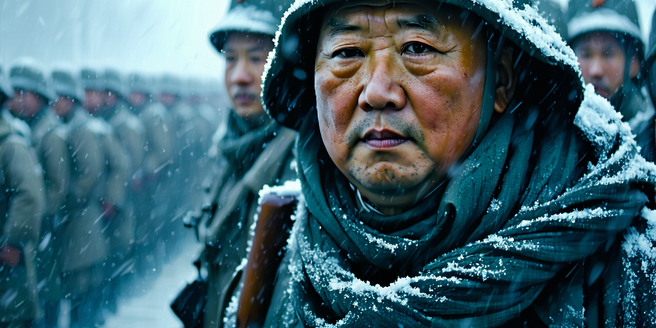
The Historical Context of Mao’s Long March
Mao’s Long March, a strategic retreat by the Chinese Communist forces in 1934-1935, is one of the most significant events in Chinese history. The march covered approximately 6,000 miles over treacherous terrain, including mountains, rivers, and swamps. During the march, the troops faced severe deprivation and hostile conditions. This retreat was primarily a response to the relentless pursuit by the opposing Kuomintang forces. The Long March symbolized endurance and solidarity and became a pivotal narrative in the rise of the Communist Party in China. Mao Zedong’s leadership during this period helped consolidate his power, as he emphasized discipline and unity among the troops. The journey marked a turning point, solidifying the Communist forces’ resolve to eventually triumph over internal and external challenges.
Environmental Challenges Faced During the March
Throughout the Long March, Mao and his forces encountered formidable environmental challenges that tested their resilience. The journey traversed diverse landscapes, from icy mountain ranges to dense forests and vast plains. Soldiers faced extreme weather conditions, ranging from freezing temperatures in the mountains to sweltering heat across the plains. Swampy areas contributed to illness and exhaustion, and the scarcity of food and water added to their hardships. At times, the soldiers had to resort to eating wild plants to sustain themselves. Additionally, the troops had to navigate unfamiliar territories, often relying on local guides to find safe passage. These environmental challenges, coupled with constant military pressure, highlighted the resilience and determination required for survival against overwhelming odds.
Comparing Past and Present Climate Obstacles
The Long March’s historical environmental challenges offer a stark contrast to modern climate obstacles. While the historical march involved natural hardships, today’s global climate challenges are exacerbated by human activity. The relentless march against emissions, pollution, and deforestation creates a landscape of adversity for modern society. In many ways, the fight against climate change is a testament to humanity’s capacity for innovation and adaptation. Presently, climate change is a multifaceted issue demanding coordinated global efforts unlike any challenge faced in the past. The lessons learned from enduring nature’s raw fury during the Long March underscore the urgency of addressing today’s climate crisis. By reflecting on the past, societies can understand the value of resilience, strategic planning, and unity in seeking sustainable solutions to environmental threats.
Lessons from the Long March for Modern Climate Strategy
The Long March offers several strategic lessons applicable to contemporary climate challenges. One core lesson is the importance of adaptability in the face of changing conditions. Just as the march’s leaders adjusted strategies to address both environmental and military challenges, current climate strategies must remain flexible and responsive. Unity and communication are equally crucial, as collaborative efforts are essential to confront global environmental issues. Persistence and innovation showcased during the Long March bring valuable principles into the dialogue on climate action. Emphasizing the role of education can further enhance these efforts, empowering communities to make informed decisions. Leaders today can draw from historical examples, fostering resilience and encouraging grassroots movements to fight against climate change.
Sustainable Practices Inspired by Historical Journeys
Historical journeys like the Long March can inspire sustainable practices today. The resourcefulness exhibited by Mao’s troops in harnessing local supplies can teach modern societies to prioritize sustainable resource use. The march’s emphasis on minimizing waste, conserving energy, and respecting ecological limits mirrors today’s calls for sustainability. By reexamining past survival strategies, current generations can implement innovative practices that respect natural boundaries. In doing so, societies may also develop a deeper appreciation for the interconnectedness of historical events and current environmental challenges. This approach can also bridge gaps between cultural heritage and modern technological advancements. Emphasizing conservation, community involvement, and sustainable living can pave the way for a healthy and balanced future, ensuring that historical lessons inform present-day efforts to achieve environmental sustainability and climate resilience.
